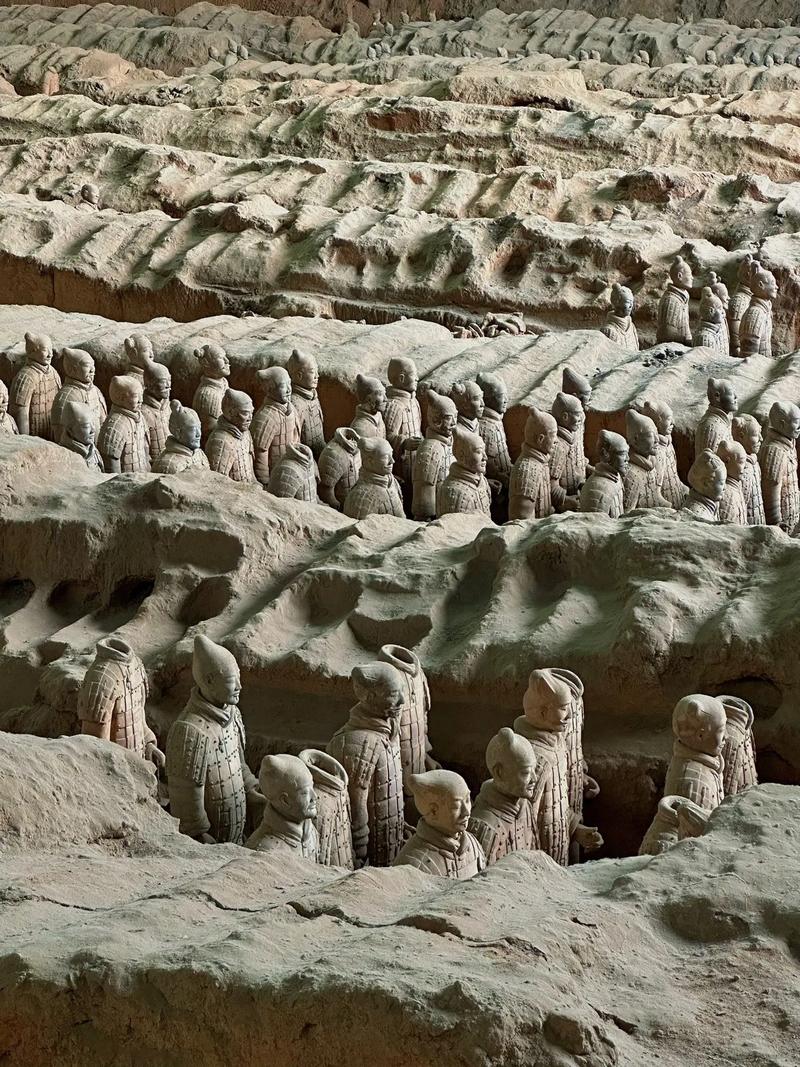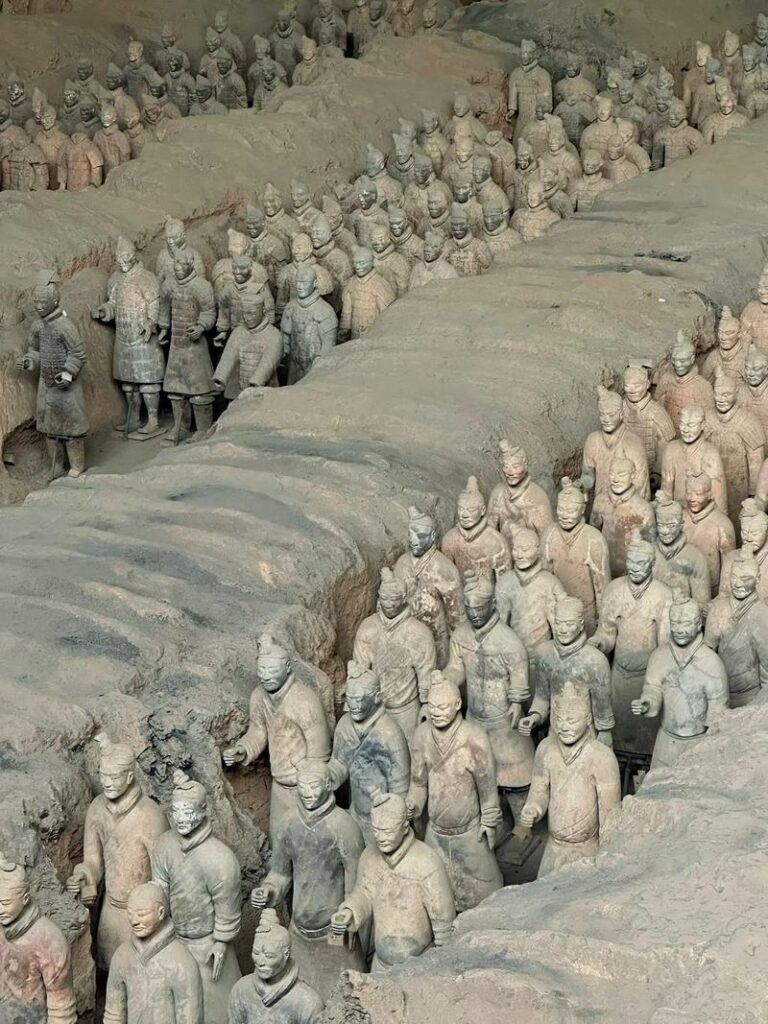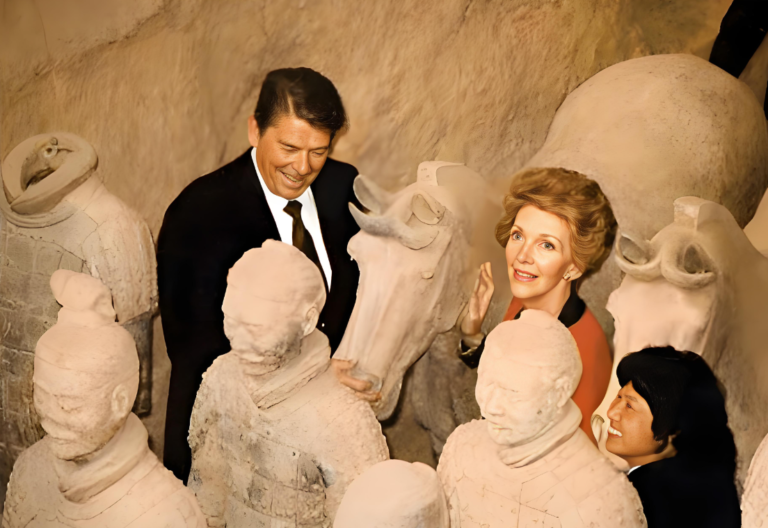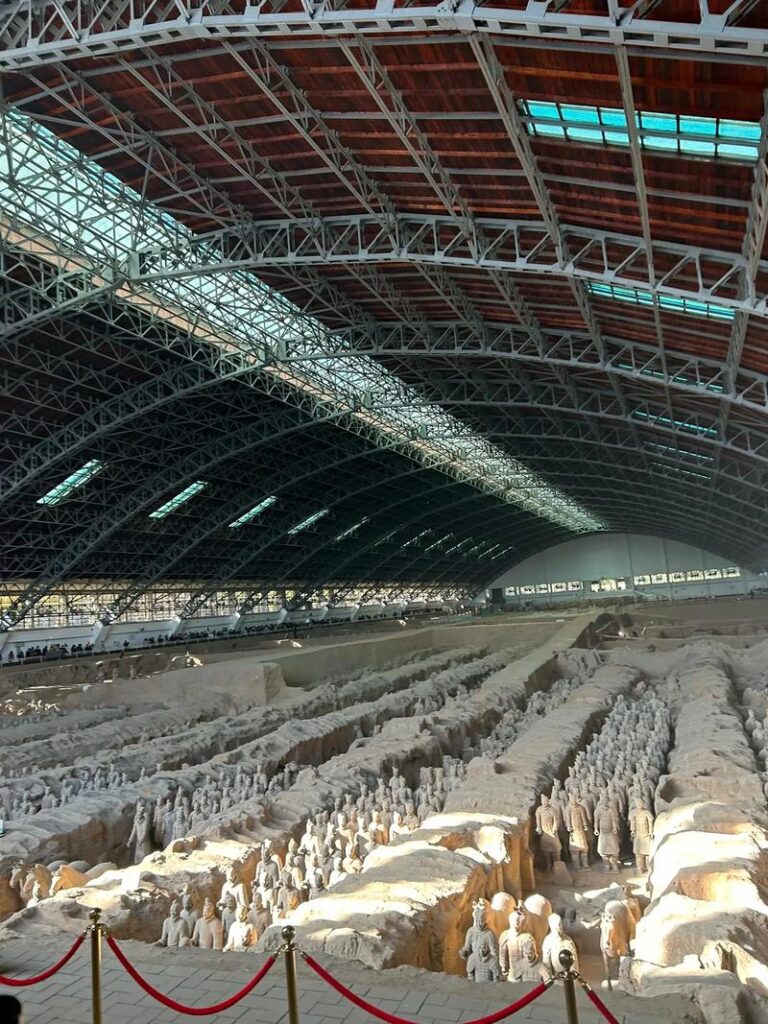Are there real bodies in the Terracotta Army?
Terracotta Warriors Mystery: Is there a real human body hidden in a 2,000-year-old terracotta legion?
In 1974, Shaanxi farmers digging a well unearthed a terra cotta human head, unveiling the eighth wonder of the world, the Terracotta Warriors of Qin Shi Huang. In the face of these terracotta warriors, which are as tall as real people, a spine-tingling question persists: are real human corpses sealed inside these lifelike soldiers?
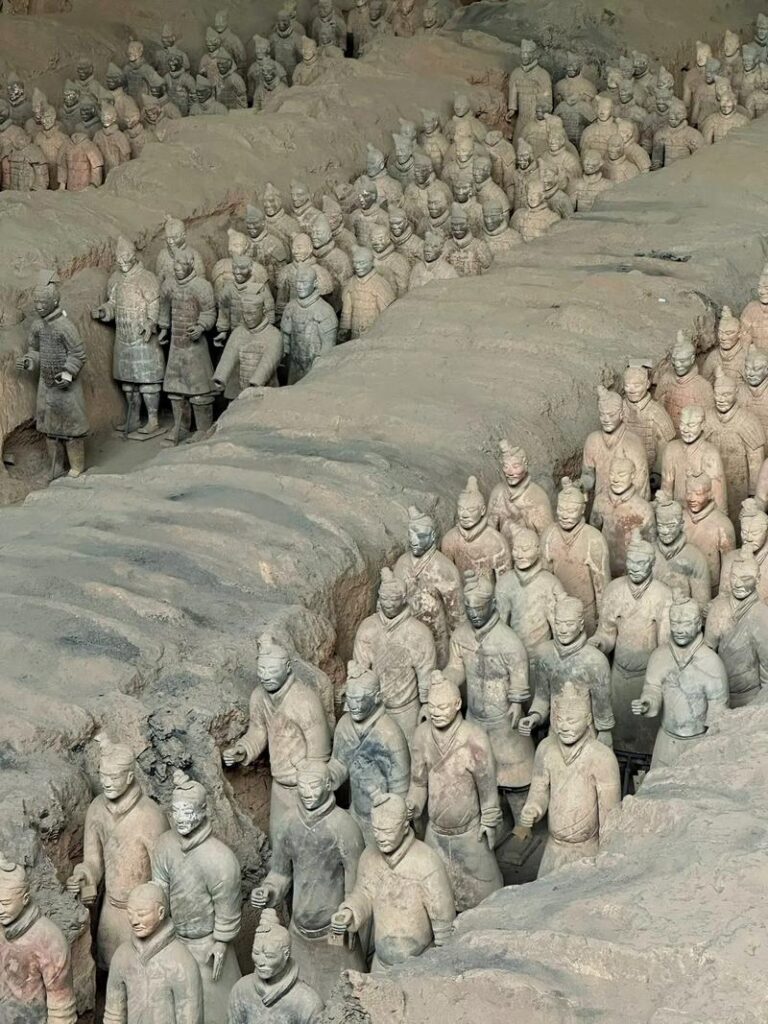
First, the historical background: from the living martyrdom to the terracotta alternative
Ancient China had a prevalent human martyrdom system, the Shang Dynasty aristocrats often found in the tomb hundreds of slaves buried with them. However, during the Warring States period, due to the sharp decline in population caused by war, the Qin State officially abolished the human martyrdom in 384 BC, and replaced it with terracotta figurines and wooden figurines.” The word “terracotta”, which originally means “human dolls”, is a testament to this reform.
As the emperor who ended the war, Qin Shi Huang’s tomb was unprecedented in scale. History records that 720,000 people took 37 years to build the tomb, but archaeology confirms that the Terracotta Warriors were made using an advanced system of division of labor: some craftsmen specialized in arms, some carved faces, and finally assembled. This assembly line operation and “living people sealed into the terracotta warriors” legend in stark contrast.
Second, scientific verification: the truth in the clay
In 2006, a broken terracotta warrior provided scientists with key evidence. Through X-ray scanning and DNA testing, experts found that the terracotta warriors are completely hollow structure, only made of fired clay, and no traces of human bones or ashes were found. This completely negates the speculation of “burnt by living people”.
More amazing is that scientists through pollen analysis cracked the production location of the mystery: pottery horse body of pine pollen shows that they are produced from the forest near the mausoleum, and terracotta figurines on the mustard pollen shows that the production of its production from the mausoleum farther away. This precise division of labor is like a modern automobile factory, where the engine and the body are produced in different workshops and finally assembled and molded.
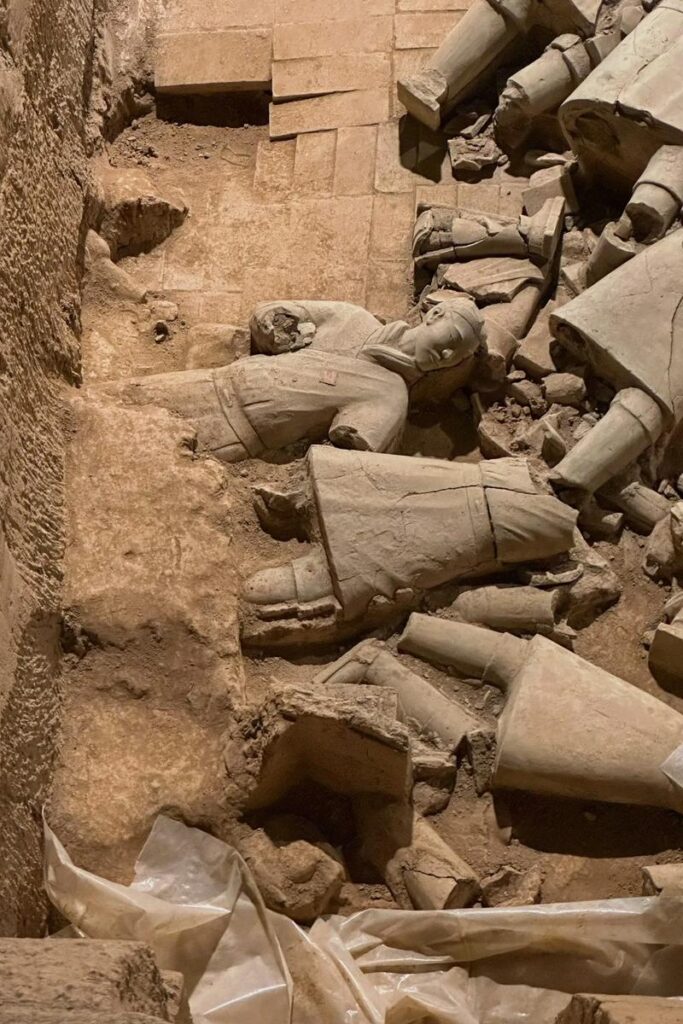
The Secret of a Thousand Faces: Live Models and Artistic Creation
Despite the absence of bodies inside the Terracotta Warriors, their individualized features still provoke associations. Research at the University of London found that each terracotta warrior’s ear contours are as unique as a fingerprint, speculating that artisans may have modeled their creations after real soldiers. The Northwestern University team also found, through 3D scanning, that the differences in the figurines’ features were accurate to the millimeter level, and even recreated the common hairstyles and armor styles of Qin Dynasty soldiers.
This realistic style is similar to that of Renaissance sculptor Michelangelo – observing the muscle lines of real people and then breathing life into the marble. The difference is that Qin craftsmen used clay to “replicate” a living army in bulk.
Destruction and mutilation: the scars left by history
The Terracotta Warriors were mostly in pieces when they were unearthed for three reasons:
1. Natural Destruction: Earthquakes during the 2200’s collapsed the roofs of the pits, and flooding caused the terracotta to crack.
2. Man-made damage: after Xiang Yu attacked Xianyang, he burned the pit in retaliation to Qin Shi Huang, and most of the bronze weapons were broken.
3. Craftsmanship Defects Hollow structure reduces weight, but reduces compression resistance, just as Legos are more likely to fall apart than whole stones.
Interestingly, modern restorers work like jigsaw puzzles: a general terracotta warrior needs to be pieced together more than 230 pieces, while the latest technology has been able to pre-simulate the restoration process in the computer with 3D scanning.
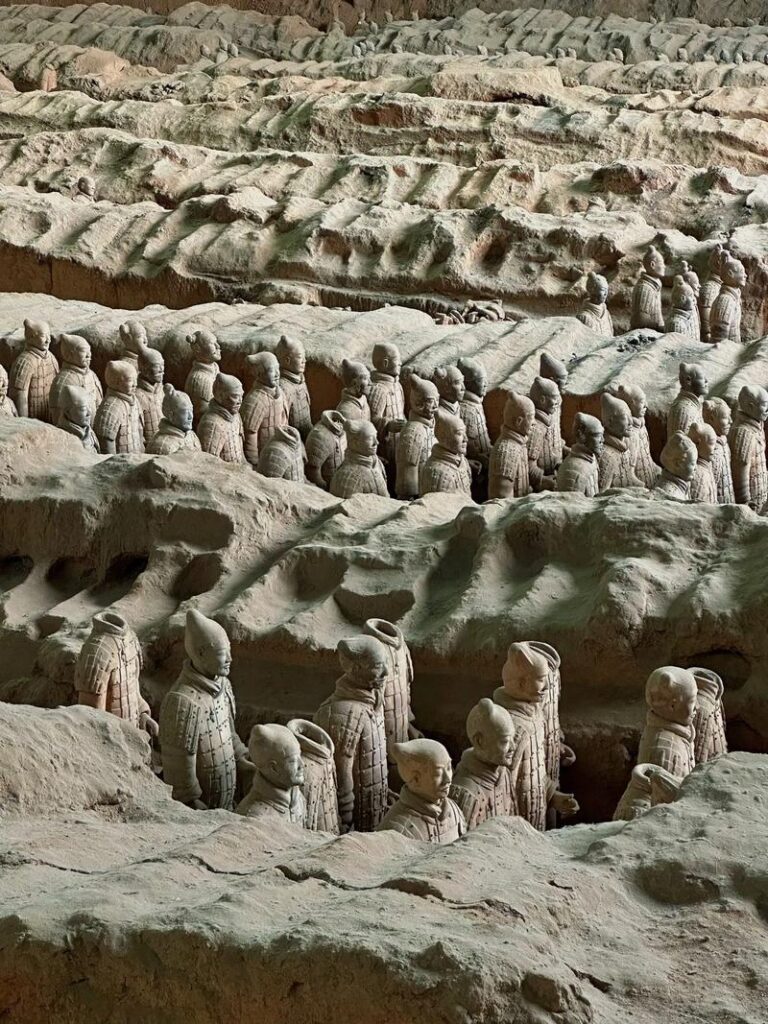
V. Modern revelations: technology illuminates the mists of history
Through cranial restoration techniques, scientists have recreated the faces of suspected Qin Shi Huang concubines and children: a young woman with large eyes and a high nose; a certain prince with a protruding lower jaw and a life-threatening bronze arrowhead embedded in his skull. These discoveries both demonstrate the tragedy of ancient royalty and confirm the essential difference between terracotta figurines and real human remains.
Conclusion: Immortal Souls in Clay
When standing in front of the Terracotta Warriors pit, we see not only terracotta soldiers, but also the epitome of an era. With their broken bodies, they tell us that the Qin people have long since used their wisdom to say goodbye to the barbaric system of human martyrdom, and instead used art to immortalize the glory of the warriors. Just as the ancient Greek sculpture used marble to praise the beauty of the human body, the Terracotta Warriors, with the unique realistic spirit of the Orient, allow the military civilization of two thousand years ago to travel through time and space and talk to people today.
What happened to the farmers who discovered the Terracotta Warriors?

